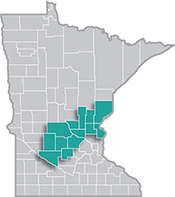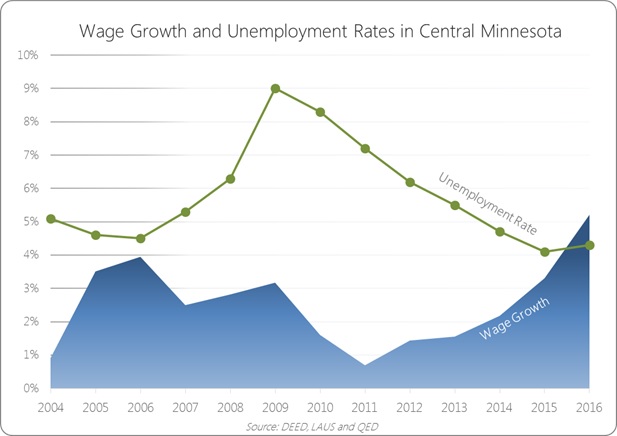 Central Minnesota is a manufacturing stronghold, with several global manufacturing firms operating there.
Central Minnesota is a manufacturing stronghold, with several global manufacturing firms operating there.
The region is especially well known for its expertise in food processing, printing, furniture manufacturing, appliances, machinery and heavy equipment manufacturing.
View our latest blogs on CareerForce. Want the freshest data delivered by email? Subscribe to our regional newsletters.
4/24/2018 10:09:32 AM
Luke Greiner
Record numbers of job openings and slower labor force growth delivered the fourth lowest unemployment rate in Central Minnesota since 1990. At four percent in 2017, the region has a slightly higher rate than the state, but still remains lower than the last period of economic expansion.
With mainly frictional unemployment – the normal rate associated from people transitioning between jobs – the tight labor market is favorable for employees and job seekers looking to maximize earnings. Meanwhile, many employers are finding the current situation challenging, raising wages and experimenting with other benefits to attract skilled workers. The data can remove any doubt that central Minnesota is experiencing upward wage pressure.
Though wages are up overall, some industries saw hourly wages grow much faster. For example, administrative and waste management services (which includes staffing and temporary help agencies) saw median hourly wages increase by 10.6 percent from 2015 to 2016. Finance and insurance, retail trade, real estate, and accommodation and food service all experienced median hourly wage growth over eight percent in the same period.
Without a significant change in economic conditions, wages will likely continue to maintain their upward trajectory in the short term. As such, the relationship between unemployment rates and wage growth is easy to see in the graph below.

Contact Luke Greiner at 320-308-5378.